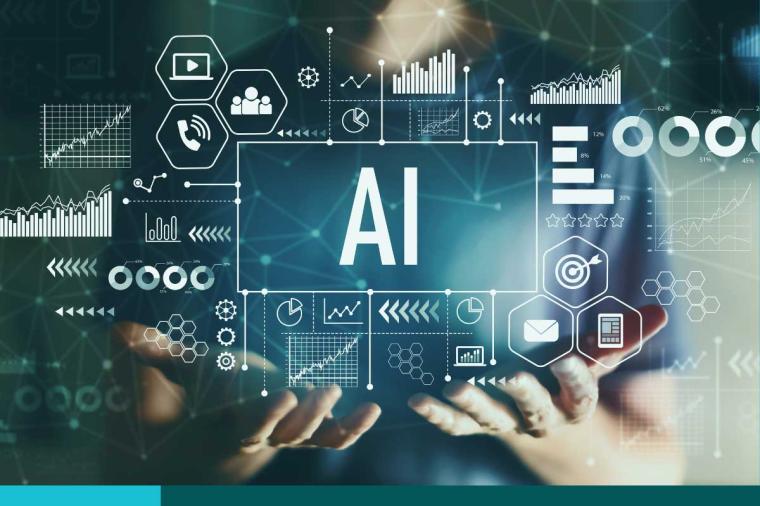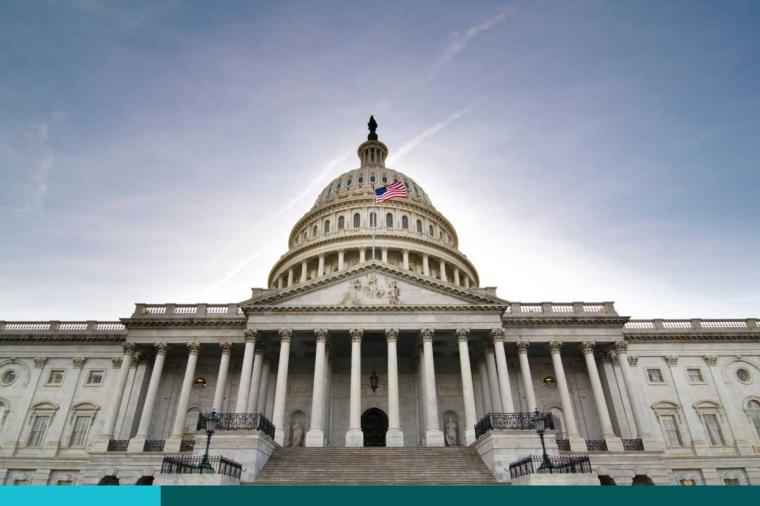AI Takes Center Stage in State and Local: Capitalizing on Sales Opportunities in 2024

The start of a new year often brings uncertainties; but in 2024 one thing is for certain—artificial intelligence (AI) is top of mind nationwide and is expected to have a transformational impact on our society both now and in the future.
In December 2023, the National Association of State Chief Information Officers (NASCIO) released its annual state CIO survey. AI took the third spot on the list after not making the top priorities list at all last year. This is reflective of the current role that emerging technologies such as AI are playing in the SLED technology space—whether it’s public administration, public health, or higher ed, AI is influencing government operations across all verticals. Through its various applications such as natural language processing, task automation, image recognition, and smarter policymaking, AI has the ability to shift how state and local governments interact with their constituencies and conduct day to day procedures.
Governance
In December 2023, NASCIO also issued an AI blueprint highlighting twelve essential considerations to assist states when developing their own AI technology roadmaps. This came after the Biden Administration’s release of an Executive Order on the Safe, Secure, and Trustworthy Development and Use of Artificial Intelligence, aimed at establishing responsible use and implementation of AI nationwide.
Understanding that AI will have a transformational role on our society, state and local governments are working to develop strategies for AI’s integration into public sector citizen services and enterprise operations. They are also creating governance and regulatory frameworks that can serve as foundational guides to safeguard its use and protect citizen privacy, security, and overall safety.
Given the potential unknown risks of AI’s implementation, it is imperative that within these newly established AI governance frameworks, data governance, quality, and classification are prioritized. States will be facing new security challenges, and without proper guidelines, states could risk compromising data or breaching compliance with privacy regulations.
For IT companies in the security and/or privacy space, state and local government customers will be looking to bake in stringent security and privacy measures throughout all layers of AI’s execution. This secure by design approach will require the protection of all AI systems and critical infrastructure from cyber threats. Secure and resilient AI software development and implementation will require software vulnerabilities to be addressed, and AI manufacturers will need to prioritize security throughout the product’s entire lifecycle.
States and localities will also be utilizing privacy-enhancing technologies (PETs) in order to prevent the misuse of personal data and mitigate potential biases or discrimination. Privacy and security impact assessments for AI technologies can help agencies stay apprised of any potential issues. With the influx of data and heightened emphasis on privacy, vendors and solution providers can expect to see demand in this category.
Use Cases and Applications
During the Covid-19 pandemic, AI was in its inception phase and states utilized the technology to help with pandemic response plans such as chatbots for unemployment and medical systems. We have seen this shift to more targeted vertical-specific applications to address states’ long-term goals, enhance citizen interactions, and meet the demands of the modern world.
For instance, as climate concerns and natural disasters continue to be at the forefront of resilience agendas nationwide, states are looking to emerging technologies such as AI to help with prevention and mitigation efforts. For example, the state of Washington created a wildfire detection pilot program driven by AI to help their Department of Natural Resources enhance emergency response time. The state of Hawaii has also been implementing AI technologies to assist with its climate resilience efforts.
Within public safety, many states are employing AI to help create safer communities. Michigan will soon be using AI gun detection technology at their state capitol building in anticipation of election season and is the first state in the nation to do so. States are also looking to AI to help improve traffic flows and enhance transportation safety.
Under its multifaceted use cases, AI can be employed to enhance broadband mapping and help expand broadband services nationwide in efforts to close the digital divide and bridge gaps in digital equity, which continues to be a top priority for both federal and state leaders.
Cybersecurity continues to be a top concern for state and local governments, and in 2024, government leaders are looking to emerging technologies such as artificial intelligence to serve as a foundational component of security. States have recognized the ability of AI to help bolster various aspects of cybersecurity prevention and mitigation, such as monitorization, data sharing, and vulnerability management.
You’ll find stickiness with your government customer if you position your tool or solution in a way that helps meet states’ long-term goals, enhances citizen services, and creates operational efficiencies. For instance, there will likely be an increased need for artificial intelligence for IT operations (AIOps) within public administration and health and human services to help automate and streamline operational workflows. With AIOps’ capabilities that also include heightened visibility and observability, states will be seeking these tools to help address their cybersecurity needs in the coming years.
Education
There is no doubt that AI is influencing educational technology across the board. Educators have begun implementing generative AI within their classrooms—for educational research, generating academic materials, text translation, school infrastructure and more.
The influx of student data over the last few years, coupled with growing cybersecurity and privacy concerns, has propelled efforts to ensure the proper safeguards are in place to protect students and educators alike.
Looking into the future, teachers have been most optimistic about using AI to assist in lesson planning, reducing time on routine manual tasks, boosting creativity within the classroom such as art enhancement, and improving data visualization. AI may also contribute to success of underserved students by driving individualized student outcomes and guiding institution decision making.
Conclusion
In 2024 and beyond, AI will be a top influencer in states’ modernization efforts serving to enhance citizen service delivery, propel better business insights backed by data analytics, automate tasks, and personalize services.
Not only will IT companies specializing in AI technologies see opportunities, but there are many other technology tools and solutions that will accompany AI adoption. For instance, having the right application platforms in place to support the adoption of AI will be crucial. Containerized AI software, for example, can help support visibility in AI processes. Data center modernization will be critical for agencies to successfully employ AI technologies. You can also expect from your customer higher demand for cloud services, as the cloud provides the scalability, flexibility, agility, and adaptability that is needed to unlock the full potential of predictive analytics and data transformation for enterprise insights.
IT companies should continue to stay abreast of developing regulations and policies governing AI and it usage, with the understanding that security, privacy, and data governance will be top priority. Shifting to a by design approach where security and privacy are emphasized from start to finish will be imperative.
To get more TD SYNNEX Public Sector Market Insight content, please visit our Market Intelligence microsite.
About the Author:
Yvonne Maffia is a senior analyst within TD SYNNEX Public Sector’s Market Intelligence organization, covering state, local and education markets. She applies insights and analysis to purchasing trends to help vendors and partners shorten their sales cycles.



























